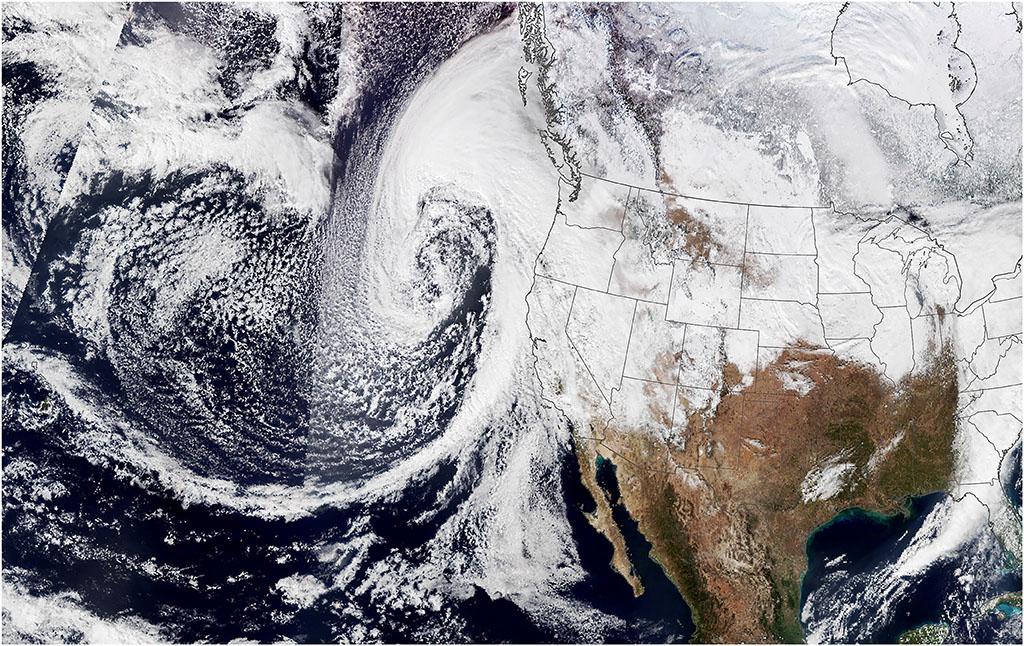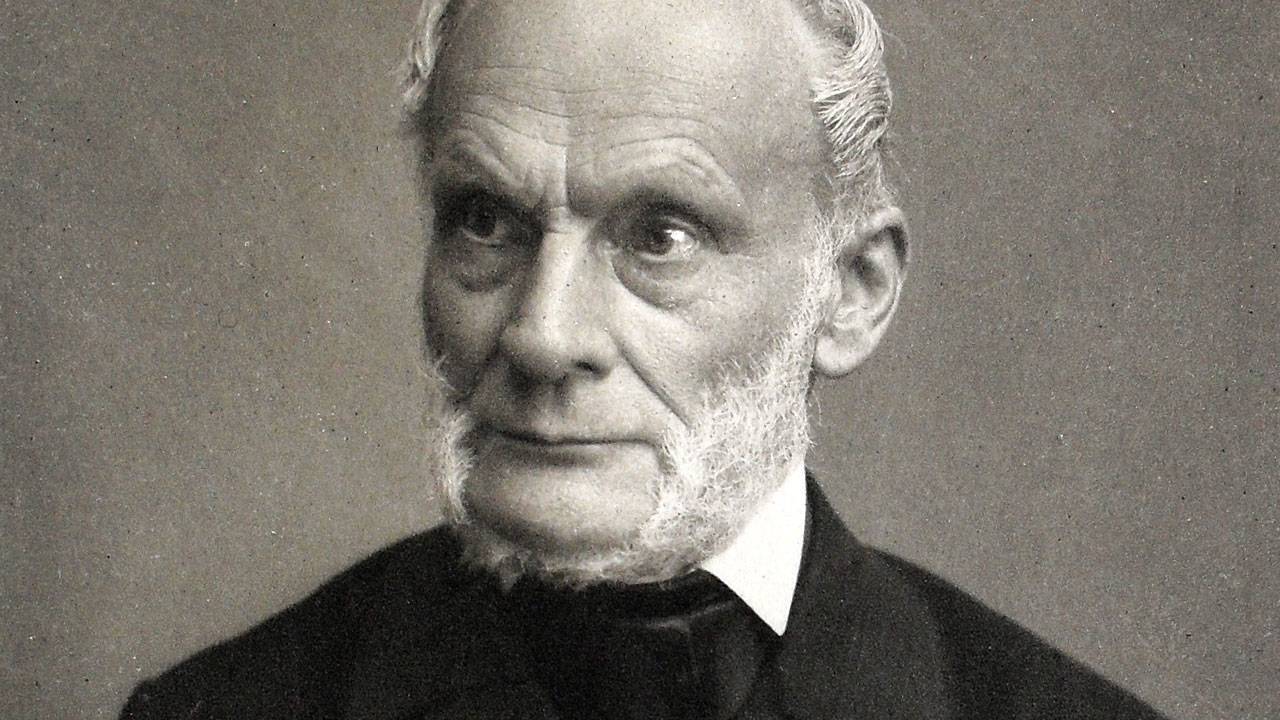How a changing Climate can enhance Rainstorms, according to a 190-year-old Equation
David Adam published in March 2023 an article in PNAS, […]
Date Posted:
June 4, 2023
David Adam published in March 2023 an article in PNAS, where he takes a closer look at the clausius-clapeyron equation.
PNAS: In March 1835, a young Charles Darwin was high up in the Andes and struggling to cook supper. “Our potatoes after remaining for some considerable time in the boiling water were nearly as hard as ever,” he wrote in Voyage of the Beagle (1). Darwin’s hungry companions blamed their new cooking pot, but the naturalist had a more scientific explanation: the altitude. “Water necessarily boiled, from the diminished pressure of the atmosphere, at a lower temperature than it does in a less lofty country,” he wrote.

At almost the same time, French engineer and physicist Émile Clapeyron worked out why reduced pressure at altitude affects water’s boiling point in that way. His work eventually established the relationship between the pressure of a substance and temperature, when two phases of that substance are in equilibrium (2). The relationship is now known as the Clausius–Clapeyron equation.
Nearly 200 years later, this historical insight is helping climate scientists understand the effects of climate change. The equation shows how warmer air can hold more moisture, which is crucial to forecast the increased strength of storms and the higher intensity of rainfall. “A key point about this equation is that it has an exponential in there,” says Peter Stott, a climate scientist at the UK Met Office. “An exponential curve, of course, goes up more steeply the further up you get. So quite quickly as temperature increases, you get into large numbers for additional rainfall.”
“The equation points at a wetter future. But as researchers are learning, that’s only the beginning. Future storms may produce even more rain than the venerable equation predicts.”
David Adam
Heads of Steam

The Clausius in the equation is Rudolf Clausius, a German physicist best known for introducing the concept of entropy. Over a few decades in the middle of the 19th century, Clausius, Clapeyron, and a handful of others figured out most of what we know about thermodynamics.
“That was really the key time when most of the giants of the emerging field were working and publishing their ideas,” says Wayne Saslow, a physicist at Texas A&M University, who has studied and written about the history of thermodynamics (3). It was the age of the steam engine. Sadi Carnot, James Joule, William Rankine, and William Thomson (Lord Kelvin), as well as Clapeyron and Clausius, worked on theory and practical applications to try to improve the efficiency of this crucial technology.
Clapeyron was one of the first to consider the theory of how vapor and liquid phases of water behave as the fluid inside a steam engine is heated. By 1834, he had plotted how vapor pressure—the pressure exerted by the vapor when in equilibrium with the liquid—would change with temperature. In 1850, Clausius refined the relationship to include latent heat, the energy required to vaporize a given amount of liquid, to give the form of the equation that we use today (4).
“A lot of people are interpreting the equation incorrectly. Clausius–Clapeyron controls the amount of moisture in the atmosphere, but it doesn’t control rainfall directly.”
Kevin Reed
The equation can explain everyday observations, such as how a pressure cooker can speed up meals by making water boil at 120 °C. Scientists across various disciplines use it to estimate everything from the likely composition of atmospheres and oceans on other planets to the energy potential and risks of exotic methane hydrate crystals found beneath coastal sediment and permafrost. But one of its most important uses is in meteorology, particularly in simulations of how the atmosphere and weather will respond to climate change.
Meteorologists use the Clausius–Clapeyron equation to understand when water vapor will condense to liquid. That happens at what’s called the saturation vapor pressure, the maximum pressure that can be exerted by water vapor before it condenses. The equation shows that this pressure increases exponentially with temperature. In other words, warm air can hold more water vapor—which means it can also release more liquid water as rain.
The equation says that for every extra degree Celsius of warming, air can hold 7% more water. It would seem to suggest that with 2 °C of global warming, the world could expect 14% more moisture in the air. With 3 °C of warming that would be 21%, and so on. In practice, however, things are a little more complicated.
Stormy Weather
“How saturated the air gets depends importantly on how much water there is to saturate it,” Stott says. “So, this relationship only works fully over the oceans, where there’s an unlimited supply of water.” Over land, if there isn’t 7% extra moisture available in the soil, the air above won’t take up and hold that amount of water either—irrespective of a 1 °C rise. “There isn’t an unlimited water supply over the land, so for many of the really heavy rain phenomena, there needs to be an air mass coming from over the ocean,” Stott says.
Much of the heavy rain and flooding seen in California in recent months and years was rooted in events that started over the ocean, and so carried the full amount of extra water vapor predicted by the Clausius–Clapeyron equation. These rainstorms are driven by shifting long and narrow columns of water vapor called atmospheric rivers, which often originate in the tropics (see ref. 5). One infamous atmospheric river, nicknamed the Pineapple Express, carries water vapor from the warm waters near Hawaii to the US West Coast roughly every few years. “The global rise in temperature is more like 1.2 degrees, so there’s probably something like 8% more moisture in atmospheric rivers now than there would have been without climate change,” Stott says.
Rainfall
What does that mean for rainfall? Kevin Reed, an atmospheric scientist and extreme weather expert at Stony Brook University, New York, has worked to quantify the impact of climate change on rainfall. The results, he says, often diverge from what the Clausius–Clapeyron equation might suggest. “A lot of people are interpreting the equation incorrectly,” he says. “Clausius–Clapeyron controls the amount of moisture in the atmosphere, but it doesn’t control rainfall directly.”
Sometimes the increase in rainfall is less than that predicted by the equation, due to a poorly understood physical aspect of cloud science called precipitation efficiency. In short, not all of the water vapor condensed from the air actually reaches the ground as rain or snow because some of it re-evaporates.
The type of rainstorm is also important. Atmospheric rivers are relatively straightforward meteorological phenomena that typically condense all of their water vapor to liquid as they rise over land into colder air.
That’s not the case for other rainfall events. Convective storms, for example, form around a rapidly rising vertical column that sucks in air from the surrounding atmosphere. This dynamic process pulls in vapor, concentrating even heavier rainfall over a localized spot. Crucially, convective storms also gain power from that condensing vapor. So, when rising temperatures add moisture to the air, they supercharge the storm, increasing its powers of concentration. This means that the increase in rainfall from thunderstorms and tropical cyclones can often exceed the Clausius–Clapeyron relationship.
“When a storm becomes stronger, it means that its circulation is also becoming stronger, which means it can evaporate more water vapor into the center of the storm and release more latent heat, which means it can produce more rainfall,” Reed says. “And then you might anticipate getting larger than the 7% increase.” The more intense the storm, the greater the impact. “When these storms are hurricane strength, then we really see those percentages go up,” he says.
In a paper published in 2022 (6), Reed’s team looked at how rainfall from the strongest North Atlantic hurricanes in 2020 was made more intense by global warming. Using a technique called hindcast attribution, they compared real-world results with a model that assumed there had been no anthropogenic warming. They found that extreme rates of rainfall, measured in 3-hour increments, increased by 11%.
Given that sea surface temperature in the North Atlantic basin has warmed by 0.4 to 0.9 °C, the 11% increase is almost twice what would be expected from the Clausius–Clapeyron equation. Reed says this demonstrates the convective effect. Storms like these, with more rainfall than anticipated, are known as super-Clausius–Clapeyron events.
This means, Reed warns, that the apparent simplicity of the Clausius–Clapeyron equation could lead to some misleading predictions that underestimate the likely increases in rainfall as the temperature increases further. “It means we have to be careful about looking at historical records and inferring future change just from what we see,” he says. He is now working to better quantify the relationship between rainfall and sea surface temperature in models.
Such analysis should help us predict how future rainfall might affect flooding, one of the most serious hazards of climate change. But it is only part of that story. “Water floods to the lowest point that it can, which means if you have 20% more rain, it doesn’t mean that your flood level is going to be 20% higher,” Reed explains. “It could be larger than that, or it could actually be less.” The only way to be sure is to combine rainfall models with detailed predictions of hydrology in specific landscapes. One early attempt to do this examined water levels in the wake of Hurricane Florence, which devastated the Carolinas in 2018 (7). It found that the Cape Fear River basin could reduce extreme water levels during the storm, as it buffered surges from the ocean side.
As such work probes the details of how rainfall and flooding will change in a warming world, the 190-year-old Clausius–Clapeyron equation will continue to act as a useful rule of thumb. But Reed says it’s important that more studies examine where it falls short—and why researchers using the equation may sometimes need to take a multitude of other factors into consideration.
“The equation is not just a climate change thing,” Stott says. “It’s a climate thing. A weather thing.”
Summary
- For every extra degree Celsius of warming, air can hold 7% more water.
- This relationship only works fully over the oceans, where there’s an unlimited supply of water. Over land, if there isn’t 7% extra moisture available in the soil, the air above won’t take up and hold that amount of water.
- For many of the really heavy rain phenomena, there needs to be an air mass coming from over the ocean – long and narrow columns of water vapor called atmospheric rivers.
- Rainfall from thunderstorms and tropical cyclones can often exceed the Clausius–Clapeyron relationship.
- When a storm becomes stronger, it means that its circulation is also becoming stronger, which means it can evaporate more water vapor into the center of the storm and release more latent heat, which means it can produce more rainfall.
- The global rise in temperature is more like 1.2 degrees, so there’s probably something like 8% more moisture in atmospheric rivers now than there would have been without climate change.
- A paper published in 2022 – study on how rainfall from the strongest North Atlantic hurricanes in 2020 was made more intense by global warming – found that extreme rates of rainfall, measured in 3-hour increments, increased by 11%.
- The convective effect. Storms, with more rainfall than anticipated, are known as super-Clausius–Clapeyron events.
- The apparent simplicity of the Clausius–Clapeyron equation could lead to some misleading predictions that underestimate the likely increases in rainfall as the temperature increases further.
